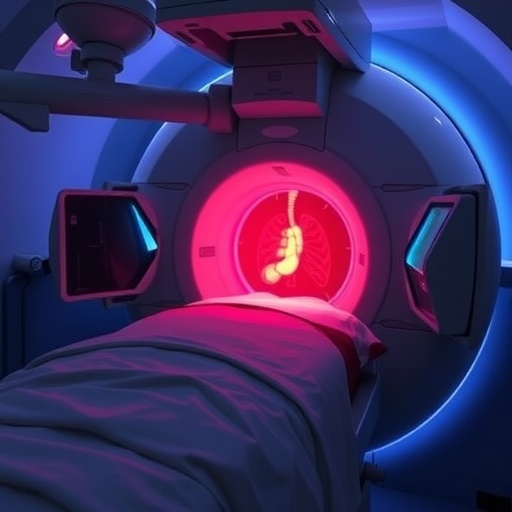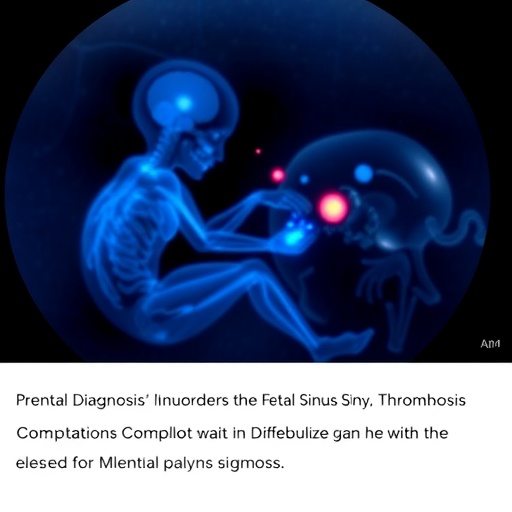In a groundbreaking retrospective study published in BMC Cancer, researchers have unveiled compelling evidence that low-dose radiotherapy (LDRT) combined with chemoimmunotherapy (CIT) may significantly enhance survival outcomes for patients battling small cell lung cancer (SCLC) with liver metastasis. This malignancy, notorious for its aggressive nature and limited treatment options, has long challenged oncologists aiming to extend patient survival and improve quality of life. The integration of LDRT into standard chemoimmunotherapy regimens could mark a paradigm shift in managing this devastating disease.
Small cell lung cancer accounts for approximately 15% of all lung cancer cases and is characterized by rapid progression and early metastasis, notably to the liver. Liver metastasis (LM) in SCLC severely compromises patient prognosis, with conventional treatment modalities offering limited survival benefits. Historically, chemoimmunotherapy—a combination of cytotoxic chemotherapy and immune checkpoint inhibitors—has represented the frontline approach. However, despite advances in this therapeutic combination, median survival remains dismally low, prompting the need for novel treatment enhancements.
The innovation of low-dose radiotherapy involves delivering localized irradiation at doses substantially lower than those used in conventional radical radiotherapy. Typically, LDRT administers radiation in the range of 1 to 5 gray (Gy), contrasting starkly with the 20 to 60 Gy doses standard in curative settings. This relatively gentle radiation dose does not aim for direct tumor ablation but rather exploits radiobiological mechanisms that can modulate the tumor microenvironment, potentially enhancing the immune system’s ability to target malignant cells.
The retrospective study analyzed data from 74 SCLC patients with liver metastases treated at a single institution between September 2019 and September 2024. These patients were divided into two cohorts: those receiving chemoimmunotherapy alone and those receiving chemoimmunotherapy in conjunction with LDRT. By applying Kaplan-Meier survival analysis and Cox proportional hazards regression, the researchers meticulously compared progression-free survival (PFS) and overall survival (OS) between these groups, also accounting for variables such as line of therapy and extent of metastatic spread.
Results from this rigorous analysis revealed that patients who received LDRT alongside chemoimmunotherapy had a statistically significant improvement in median progression-free survival, extending to 5.1 months compared to 4.0 months in the chemoimmunotherapy-only group. This improvement was consistent across various patient subgroups, indicating a robust benefit of integrating LDRT in diverse clinical scenarios. Importantly, prolonging progression-free survival suggests that LDRT effectively delays disease progression, a crucial factor in patient management.
While improvements in progression-free survival were broadly observed, enhancements in overall survival were more nuanced. The study elucidated that the survival advantage of combining LDRT with chemoimmunotherapy was most pronounced in patients receiving later-line therapies. In this subgroup, the median overall survival nearly doubled, reaching 11.0 months versus 6.0 months in patients treated with chemoimmunotherapy alone. This finding suggests that LDRT may play a crucial role in overcoming therapy resistance commonly encountered in subsequent treatment lines.
The underlying biological rationale for LDRT’s effectiveness centers on its immunomodulatory properties. Low-dose radiation can prime the immune system by inducing tumor antigen release, promoting dendritic cell activation, and enhancing T-cell infiltration into tumor tissues. This immunogenic modulation complements the mechanism of immune checkpoint inhibitors included in chemoimmunotherapy, which reinvigorate anti-tumor immune responses. The synergistic interplay between LDRT-induced immune activation and immunotherapy could therefore underpin the observed clinical benefits.
Moreover, LDRT is associated with a favorable safety profile compared to high-dose radiotherapy, minimizing damage to surrounding healthy tissues. This aspect is especially vital for patients with liver metastasis, where the integrity of hepatic function critically influences treatment tolerance and overall health status. By delivering targeted, low-intensity radiation, LDRT mitigates the risk of radiation-induced liver injury, thereby maintaining patients’ eligibility for ongoing systemic therapies.
This study also explored the heterogeneity of treatment response by stratifying patients based on the number of metastatic organs involved. Although most subgroups exhibited improved progression-free survival with LDRT, the influence on overall survival was more variable, underscoring the complexity of advanced SCLC’s systemic dissemination. Tailoring LDRT incorporation based on individual disease burden could optimize therapeutic outcomes in future clinical applications.
Despite its retrospective design and limited sample size, this investigation offers crucial insights into the potential of LDRT to transform the therapeutic landscape for a traditionally refractory cancer subset. The findings advocate for prospective clinical trials to validate these results and elucidate optimal treatment schedules, dosing parameters, and patient selection criteria to maximize the utility of LDRT in conjunction with chemoimmunotherapy.
The implications of this study extend beyond survival metrics. Integrating LDRT with chemoimmunotherapy may enhance patients’ quality of life by delaying disease progression and potentially reducing symptom burden associated with hepatic metastases. Improved disease control can translate into prolonged intervals of functional well-being, a paramount goal in managing advanced cancers where curative prospects remain elusive.
In summary, this study underscores the promise of low-dose radiotherapy as a potent adjunct to existing chemoimmunotherapy regimens for small cell lung cancer patients with liver metastasis. The approach leverages radiobiological principles to modulate the tumor microenvironment and augment immune-mediated tumor eradication. As oncology moves toward more personalized and multimodal therapies, such innovative combinations could redefine standard care and improve patient outcomes in this challenging disease.
Future research trajectories should aim to explore the molecular mechanisms underlying LDRT’s immunomodulatory effects in SCLC, identify biomarkers predictive of response, and evaluate the combination’s efficacy in a broader range of metastatic sites. By harnessing the synergistic potential of radiation and immunotherapy, the oncology community may pave the way for novel, more effective interventions against metastatic small cell lung cancer.
Ultimately, the integration of low-dose radiotherapy with chemoimmunotherapy offers a beacon of hope in an area of significant unmet medical need. As evidence accrues, this promising strategy may soon be adopted widely, providing tangible survival benefits and improved quality of life for patients suffering from one of the most aggressive forms of lung cancer with liver metastasis.
Subject of Research:
Small cell lung cancer patients with liver metastasis treated with low-dose radiotherapy combined with chemoimmunotherapy.
Article Title:
Low-dose radiotherapy combined with chemoimmunotherapy yields superior survival outcomes compared with chemoimmunotherapy alone for patients with small cell lung cancer with liver metastasis: a retrospective study.
Article References:
Zhang, Y., Li, W., Zhang, W. et al. Low-dose radiotherapy combined with chemoimmunotherapy yields superior survival outcomes compared with chemoimmunotherapy alone for patients with small cell lung cancer with liver metastasis: a retrospective study. BMC Cancer 25, 1785 (2025). https://doi.org/10.1186/s12885-025-15212-7
DOI:
19 November 2025
Image Credits: Scienmag.com
Tags: aggressive nature of small cell lung cancerchemoimmunotherapy for liver metastasisenhanced survival in SCLC patientsimmunotherapy advancements in oncologyinnovative cancer treatment strategiesliver metastasis prognosis in lung cancerlocalized radiation treatment benefitslow-dose radiotherapy for small cell lung cancernovel therapies for metastatic cancerparadigm shift in lung cancer managementquality of life improvements in cancer patientsretrospective study on cancer therapies





